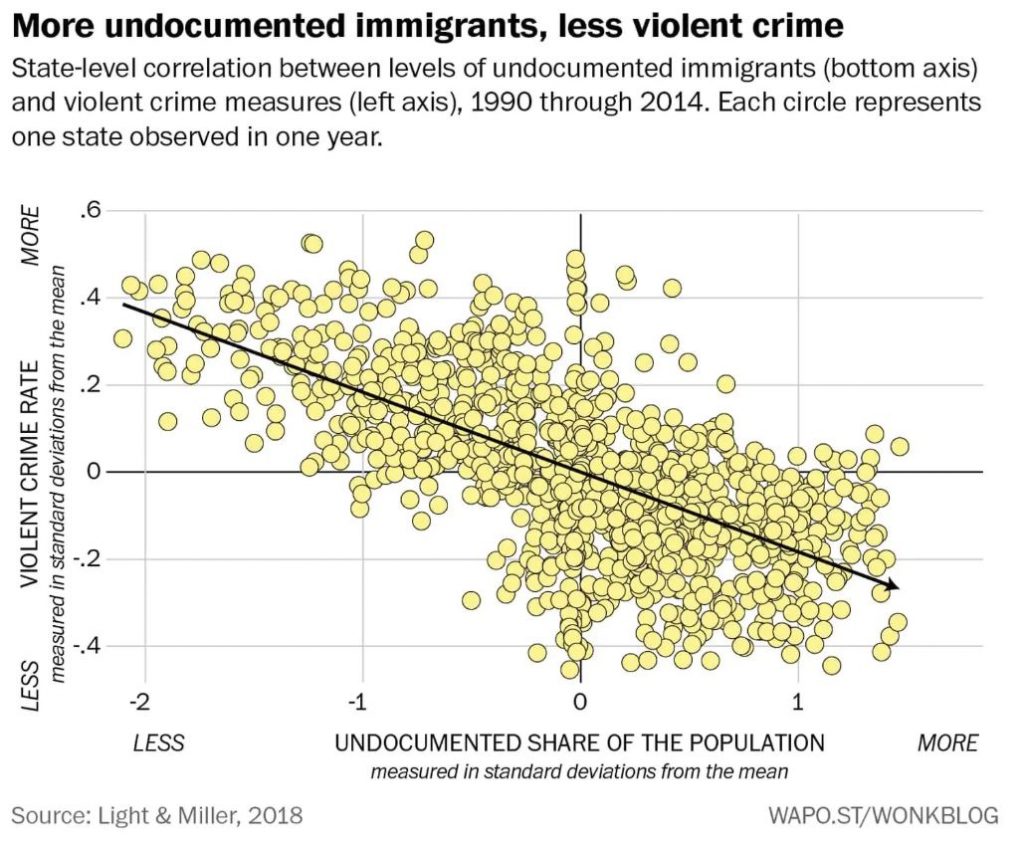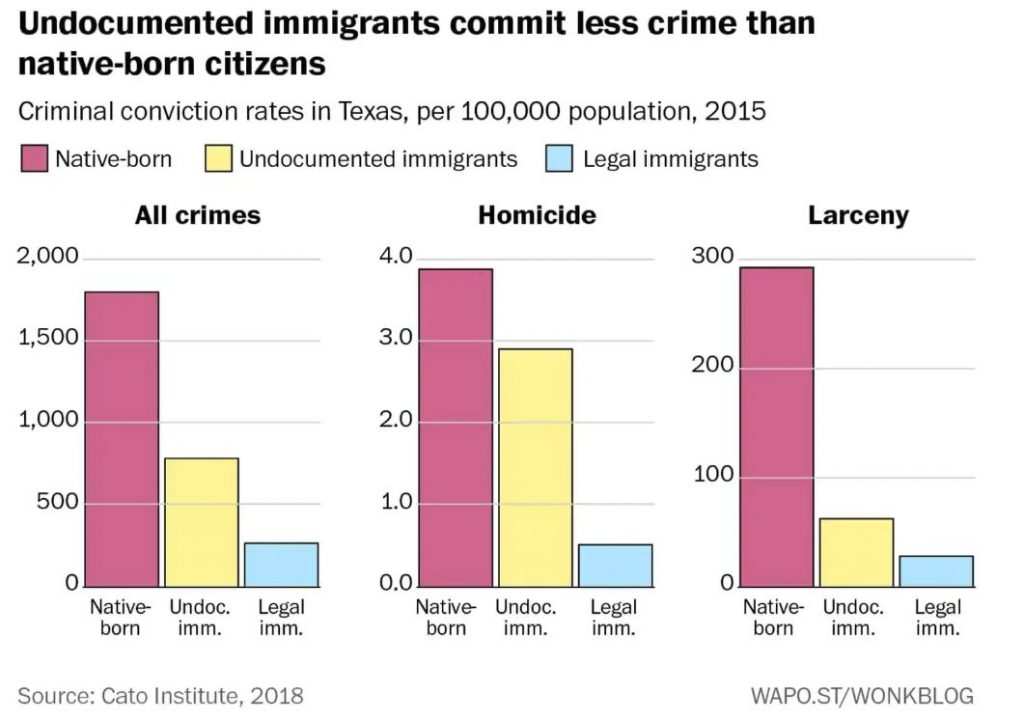
According to Harvard economist Edward Glaeser,
Cities aren’t full of poor people because cities make people poor, but because cities attract poor people with the prospect of improving their lot in life. The poverty rate among recent arrivals to big cities is higher than the poverty rate of long-term residents, which suggests that, over time, city dwellers’ fortunes can improve considerably. The poorer people who come to cities from other places aren’t mad or mistaken. They flock to urban areas because cities offer advantages they couldn’t find in their previous homes…The absence of poor people in an area is a signal that it lacks something important, like affordable housing or public transportation or jobs for the least skilled. The great urban poverty paradox is that if a city improves life for poor people currently living there by improving public schools or mass transit, that city will attract more poor people.[ref]The Triumph of the City, pg. 70-71.[/ref]
In short, “The flow of less advantaged people into cities from Rio to Rotterdam demonstrates urban strength, not weakness…Urban poverty should be judged not relative to urban wealth but relative to rural poverty.”[ref]Ibid., pg. 9-10.[/ref] In my view, Glaeser’s insight is incredibly important. Not only does it stress the need for proper comparisons, but also highlights the difference between absolute mobility and relative inequality. This indicates that if city officials were to focus solely on the poverty rate or level of inequality within their cities without tracking mobility and length of residency, they could very well be misdiagnosing the situation.[ref]Andreas Bergh and Therese Nilsson have made similar observations about inequality and poverty.[/ref]
I think a similar approach can be taken concerning poverty and inequality within the United States. What if inequality in the United States isn’t necessarily because of some abstraction like “the rich,”[ref]Not to make light of powerful groups who do capture segments of the economy.[/ref] but is due to the amount of low-income immigrants we’ve taken in over the last several decades? Yes, within-country inequality has grown, but is it in part due to low-skill, low-education workers escaping the poverty of their origin countries and becoming better off by coming here (therefore, lowering between-country inequality)?
A new paper from Mission Foods Texas-Mexico Center at SMU explores the effects of immigration on inequality. After reviewing the economic literature, the authors conclude
that low-skilled immigration to the U.S., much of it from Mexico, has only played a minor role in rising income and wage inequality. To the extent that there is an effect, it has come through the presence of immigrants, and less as a result of immigration’s effect on natives’ wages. Immigrants’ bimodal skill distribution, with clustering at the top and bottom of the U.S. skill distribution, has widened the overall income distribution slightly. At the same time, low-skilled immigration to the U.S., and migrants’ remittances, have played a large role in lowering global inequality by moving millions of low-income Mexican families further away from poverty and closer to the global middle class.
Migration from poor to rich countries represents a reallocation of labor that increases the wage of the migrant while also raising wages in the sending country. It moves labor to capital-rich countries where businesses readily employ it. Productivity and output rise. As long as business investment responds to the worker influx, wage effects on native workers will be limited. Migration is the last frontier of globalization. Removing barriers to international mobility would result in large economic gains that far outweigh any costs (pg. 11-12).[ref]You can find a brief overview of the paper here.[/ref]
Though it only plays a small role, immigration has increased inequality within the U.S. because poor non-citizens became less poor. Elsewhere, Pia Orrenius–vice president and senior economist at the Federal Reserve Bank of Dallas and one of the authors of the paper above–explains further:
We surveyed the literature that’s out there and we found two high quality studies that showed that all this out migration from Mexico has actually increased wages in Mexico. That is consistent with economic theory. If there’s fewer workers they should command a higher return…You might think that if migration raises wages in Mexico, it should lower them in the U.S. But what the surveys of literature say is that there’s actually only a very small impact on the wages of native workers in terms of the competition with immigrants, and there’s many reasons for that. The main reason is that there really aren’t a lot of low-skilled workers in the U.S. who compete with immigrants. You’re looking at a small and shrinking group of workers and so there’s not a lot of effect there.
Where we did see an impact is on the income distribution. When Mexican immigrants come in, for example, they have very low levels of education and so they come into the U.S. and they initially earn very low wages. So just by virtue of them coming into the country they’re actually broadening the income distribution by coming into the low end. So just mechanically there’s more income inequality because they’re coming in at very low wage jobs that generally Americans are not filling.
So there’s a mechanical reasoning for the increase in income inequality that’s partly related to migration, but generally we found in looking at the literature the bigger reasons are what’s called routine bias technological change and the hollowing out of the middle of the income distribution. And that’s due to technological change and the replacement of workers and routine-based occupations. We call that labor market polarization.
Labor market polarization or the hollowing out of the middle class is not consistent with migration from Mexico because again immigration from Mexico is coming in at the very low end of the distribution. So that’s how we concluded that there’s a lot going on here, but generally the main driver for income inequality in the U.S. and other countries is not low-skilled immigration.
…The other thing that we noted, and this is actually really important, is that if we’re looking at income inequality in the United States or in western Europe, yes you do see increasing income inequality. We’re unhappy with that—obviously that isn’t something that people want to see. But what we urge people to do in the paper is to look at the global income inequality. Thanks to globalization, we’ve actually seen falling income inequality in the world. So the world as a whole is better and better and better off. We’re richer as a world; we’re less unequal as a world, thanks to all of these trends that are going on. So what’s going on in the world globally is not the same as what’s going on in these individual countries.
It’s very important to remember that some of these trends that we see as negative in the U.S. are actually positive globally because they’ve allowed the poorest people in the world, like the people in India, the people in China to come out of abject poverty and actually join at least the lower middle class or the middle class.
The globalization of capital and labor may contribute to inequality within rich countries, but it’s making the world as a whole a more equal place.










